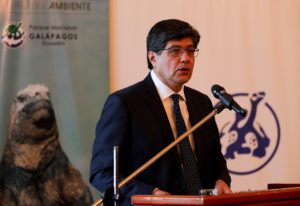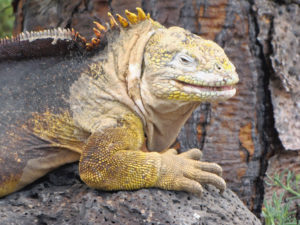
Quito, Feb 11 (EFE).- The Galapagos archipelago celebrated its 60th anniversary of being declared Ecuador’s first protected area on Monday, facing challenges ahead to continue as a standard of world conservation and as a pioneer of World Heritage.
The Government of Ecuador, in a special ceremony held Monday at the headquarters of its Ministry of Foreign Affairs in Quito, recognized the great effort for the conservation of this island complex located in the Pacific, about a thousand kilometers west of the country’s coast.
It is exactly this remoteness, along with special policies, which has allowed the islands to remain one of the few pristine spaces on the planet.
Foreign minister Jose Valencia recalled that 60 years ago the Ecuadorian government decided to create this protected area and give way to the creation of the Galapagos National Park (GNP) in order to protect the islands, with the help of the Scientific Foundation “Charles Darwin.”
“The Ministry of Foreign Affairs reiterates the support of the Ecuadorian State for the work carried out by the Charles Darwin Foundation and, of course, the Galapagos National Park,” Valencia said, highlighting the value of the islands for all humankind.
Visiting the so-called Enchanted Islands “is like making a trip to the first days of creation and finding there its most primitive inhabitants, the unique species of fauna and flora” said Valencia.

Therefore, it is everyone’s task to protect this fragile ecosystem that Ecuadorians preserve for all humanity, because it is already “a heritage of the world,” said the chancellor, recalling that last year the Galapagos islands celebrated 40 years of having been declared as a World Heritage Site by UNESCO.
Jorge Carrion, director of the GNP, told EFE that this is one of the best preserved islands in the world, although he acknowledged that it now faces enormous challenges.
He said that “95 percent of the original biodiversity of the islands to date is well conserved,” and the other five percent had been being damaged for centuries, before this area was declared a protected area.
The Galapagos is still “one of the unique pristine sites in the world,” he added.
For example, he recalled the eradication of goats introduced into the islands which had a considerable impact on several of them, as well as rats, which are still to be totally eradicated, or the wild blackberries.
But above all, he emphasized the successful recovery of giant tortoise populations and assured that “there are already more than 7,000 turtles” that have reproduced in breeding centers and repatriated to different islands.
Maria Jose Barragan, director of science at the Charles Darwin Foundation, underscored the contribution of this scientific entity and called on the Ecuadorian authorities to seek a “development model” for Galapagos that would address problems such as unregulated tourism and the coexistence of biodiversity with the population that inhabits the islands.
The Galapagos archipelago, made up of 13 large islands, six small islands and 42 islets, is located in the Pacific and thanks to its rich biodiversity is considered a natural laboratory that allowed English scientist Charles Darwin to develop his theory on the evolution and natural selection of species.
